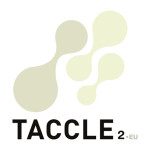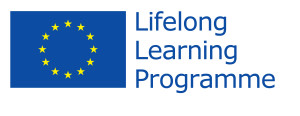Ages: 10 to 19
Overview
Turn the stories created by students from the study of a literary book into an animated video using their mobile phones.
The Little Screen (“Telinha do Cinema”) is a Brazilian project, which aims to encourage the integration of mobile technologies, in particular mobile phone, in the classroom. In this project, students participate in a creative lab video production based on the reading of a literary work studied in the Portuguese class. Through this project students have the opportunity to come into contact with audiovisual creations and connect literary and audiovisual narratives. There was a wide acceptance of the integration of students’ mobile devices as a tool to support learning. It is found that the use of mobile technologies favors mediation of collaborative learning processes, encouraging the exchange of knowledge among students and valuing creativity in problem solving.
Description
28 students aged of 12 years old took part in the project. The project was developed in the classroom, in four blocks of 90 minutes each. Before starting the project we asked students to bring to class a toy that might be related to the work being studied in class. Then the structure of a production process was presented: script – production – recording – editing – publishing.
Script – To write the script the class split into two groups to work as a production team. The first challenge was to choose a text to be turned into a screenplay and then on video. Students had to describe the environments and the actions described in the text having in consideration the toys and spaces available; and then go on to the scenes writing process.
Production – Before recording, each group wrote a final clean version of the script, and did a collective reading to check the details.
Recording –We started from the suggestions and solutions proposed by the students to step recording. The teacher helped the groups to organize the recording.
Devices – Each group used at least two mobile phones or Smartphones for the recording activity. Students brought tablets and PSP to the classroom, among other devices. Thus, the classroom was provided with institutional school own equipment (projector, desktop computer) and students personal devices.
Edition – For the editing stage we used a rotation technique in the computer management, so that everyone could have the experience of manipulating images and sounds. To complete the images captured by the students and also the narration, sound effects (as audio files) showed up to enrich the narrative.
Publication – Videos produced by students were posted on the school website and in different social networks.
An example: http://www.youtube.com/watch?feature=player_embedded&v=Mde8gWQtz1w
Sharing – The use of personal devices such as mobile phones encouraged and made it easier for the students themselves to share records of the learning process in social networks, breaking the physical boundaries of the classroom and school.
What do I need?
Computer, students’ mobile phones or tablets, Movie Maker or other video editing application.
Added value
This workshop focused on the resolution of problem situations and on learning networks. Participants were also challenged to develop artistic skills / literary and technology to solve problems proposed by teachers or solving spontaneous problems, raised from the development of production practice. Students learned to combine critical thinking and creative production. The resolution of problem situations came through collaborative learning. This collaboration became even stronger with the guided use of mobile phones, which enabled the information exchange among students, such as images and sounds search results for audiovisual creation. These teaching strategies helped to foster students’ preparation for the development of core competencies for the XXI century. During the recording process the teacher evaluated creative solutions presented by the students and encouraged them to share with the other groups. This information flow stimulated the creativity of the different groups involved.
Hints and Tips
In the preparation phase it is important that all students fully understand the activity. Therefore, it is essential that the project is clearly presented. Teacher should meet the issues raised by the students and listen to their suggestions. And should also involve the students in the activity right from the beginning, asking them to bring to the classroom toys related to the story to be transformed. And also: leave it to the students the constitution of the groups; the teacher intervention should be reduced to the strictly necessary. Each group should be asked to choose a project coordinator. The teacher has to assure that there are one or two mobile phones that allow recording sound, image and video in all groups and if necessary to replace elements of the groups to balance the number and quality of mobile devices. At the stage of videos production voices recording leave it up to students to typecast the elements of the group.
Other opportunities
This project has great potential for both students and teachers. It can be replicated in schools, educational and training centers. The project’s goal is to train participants in the target-oriented use of mobile devices as video production learning tools, and it can be applied to any subject.
By Adelina Moura, Portugal
This post is also available in: Portuguese (Portugal)




 English
English Nederlands
Nederlands Deutsch
Deutsch Italiano
Italiano Español
Español Português
Português Română
Română Cymraeg
Cymraeg
No comments yet.